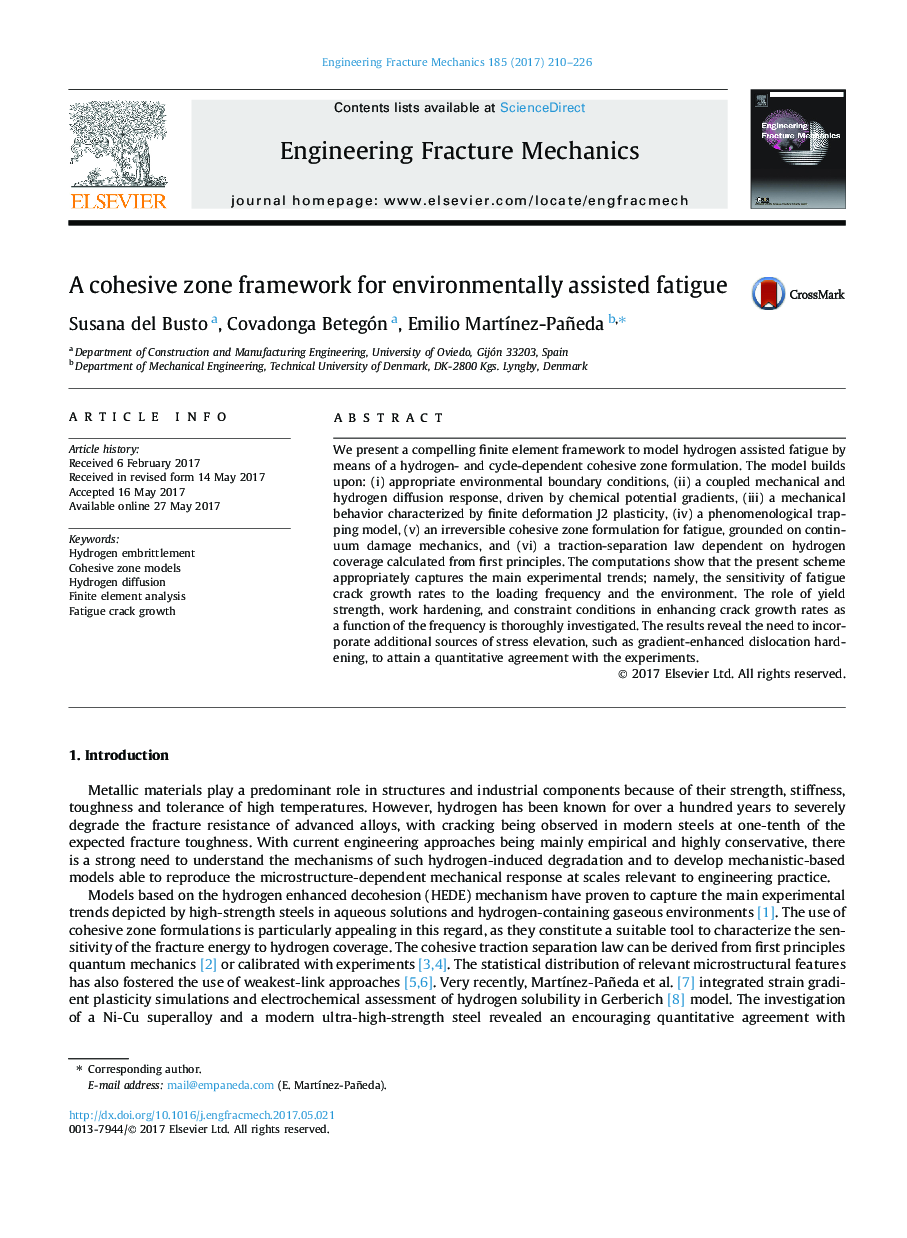| Article ID | Journal | Published Year | Pages | File Type |
|---|---|---|---|---|
| 7169390 | Engineering Fracture Mechanics | 2017 | 17 Pages |
Abstract
We present a compelling finite element framework to model hydrogen assisted fatigue by means of a hydrogen- and cycle-dependent cohesive zone formulation. The model builds upon: (i) appropriate environmental boundary conditions, (ii) a coupled mechanical and hydrogen diffusion response, driven by chemical potential gradients, (iii) a mechanical behavior characterized by finite deformation J2 plasticity, (iv) a phenomenological trapping model, (v) an irreversible cohesive zone formulation for fatigue, grounded on continuum damage mechanics, and (vi) a traction-separation law dependent on hydrogen coverage calculated from first principles. The computations show that the present scheme appropriately captures the main experimental trends; namely, the sensitivity of fatigue crack growth rates to the loading frequency and the environment. The role of yield strength, work hardening, and constraint conditions in enhancing crack growth rates as a function of the frequency is thoroughly investigated. The results reveal the need to incorporate additional sources of stress elevation, such as gradient-enhanced dislocation hardening, to attain a quantitative agreement with the experiments.
Keywords
Related Topics
Physical Sciences and Engineering
Engineering
Mechanical Engineering
Authors
Susana del Busto, Covadonga Betegón, Emilio MartÃnez-Pañeda,
